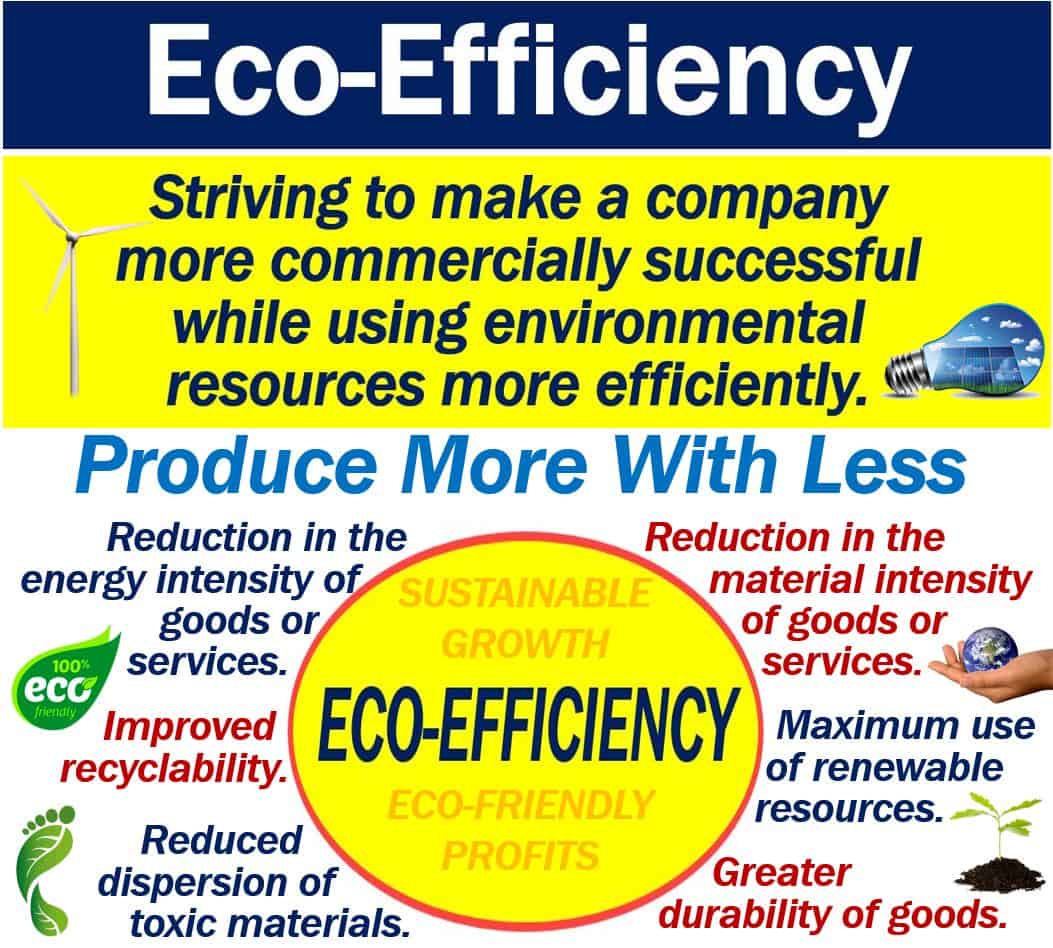Eco-efficiency is all about reducing ecological damage to a minimum while at the same time maximizing efficiency. Specifically, maximizing the efficiency of a company’s production process. It is a management philosophy that many companies across the world have adopted. Eco-efficient companies use less water, material, and energy while recycling more.
Companies that embrace this management philosophy also strive to eliminate hazardous emissions or by-products. They aim to reduce their ecological impact. Eco-efficient companies try to reduce human demands on our ecosystem, i.e., they try to reduce the ecological load.
Put simply, eco-efficiency means being an efficient business while at the same time protecting our environment.
It applies to every aspect of business, from producing and purchasing to distribution and marketing.
The University of Colorado Boulder has the following definition of the term:
“Eco-efficiency means doing ‘more with less’ — using environmental resources more efficiently in economic processes.”
“As a concept eco-efficiency provides a way of thinking about breaking the nexus between economic activity and environmental impacts, and therefore achieving sustainable development.”

Eco-efficiency – origin
The World Business Council for Sustainable Development (WBCSD) first used the term in 1992 in its publication ‘Changing Course.’
The WBCSD is a coalition of more than 200 companies across the world. They have all committed to the principles of GDP growth and sustainable development. GDP stands for gross domestic product.
AT&T, Nestlé, Kodak, 3M, and Royal Philips Electronics, for example, are WBCSD members. Sony and Toyota are also members.
Sustainable development is all about being able to develop without destroying our environment. In other words, meeting the needs of the present without compromising the ability of future generations to meet their needs.
Sustainable development is not the same as sustainable growth. Sustainable growth focuses on economics, i.e., growing without causing economic problems such as overheating or high inflation.
Eco-efficiency – more with less
WBCSD says that companies achieve eco-efficiency by delivering goods that satisfy our needs.
However, they also progressively reduce production’s ecological impacts. In other words, they achieve greater production with less.
WBCSD talks about Vision 2050 in which not one particle of waste exists. To achieve this vision, eco-efficiency of materials needs to improve by a factor of ten.
Regarding the philosophy of eco-efficiency for companies, Wikipedia writes:
” It is based on the concept of creating more goods and services while using fewer resources and creating less waste and pollution.”
Eco-efficiency – critical aspects
According to the WBCSD, these are the most critical features of eco-efficient companies:
- Producing goods and services with fewer materials.
- Producing goods and services with less energy.
- Dispersing lower volumes of toxic materials.
- Improved recyclability.
- Striving to use renewable resources.
- Making goods that last longer.
- Greater service intensity of products and services.
